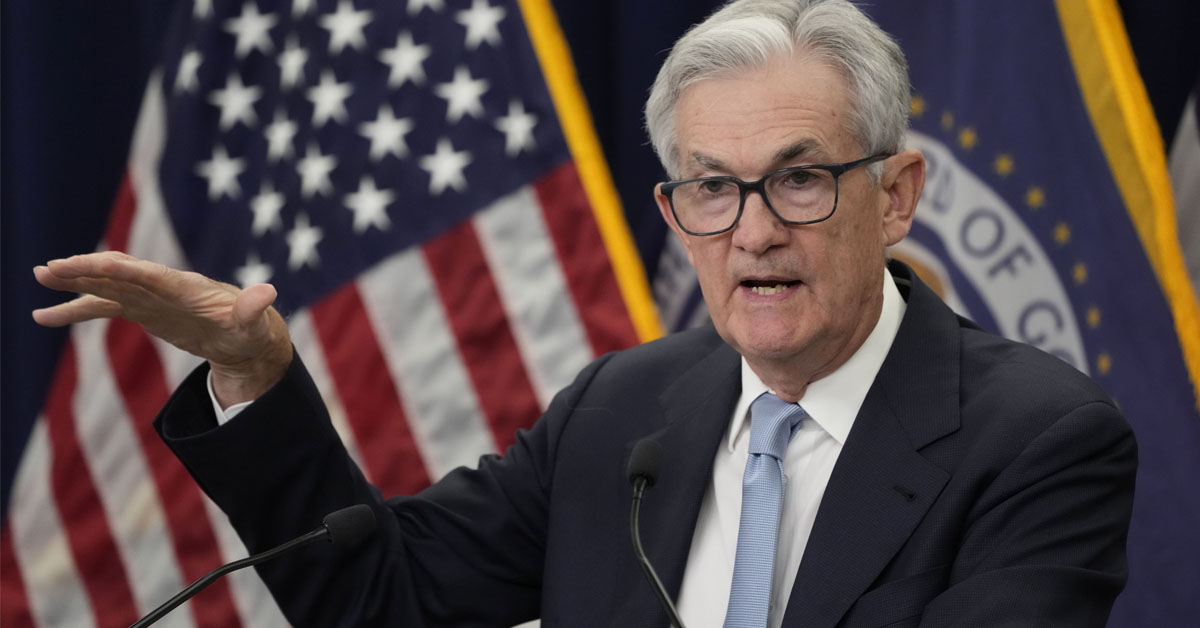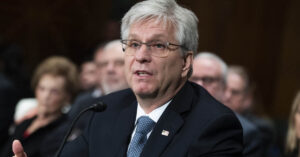The Federal Reserve struck a middle ground between short- and long-term thinking at its latest meeting, announcing a pause in its hawkish policy of interest rate hikes but signaling that two further increases are expected this year.
The break from benchmark rate increases put a halt to 10 straight increases from the central bank. Without an increase this month, the Fed’s anchor rate will remain in a target range of 5% to 5.25%.
At his customary press conference following a meeting of the Federal Open Market Committee (FOMC), Federal Reserve Chair Jerome Powell announced that prior rate hikes have “covered a lot of ground and the full effects of our tightening have yet to be felt.”
The FOMC was unanimous in calling for the pause. Fed officials say they will now monitor how the economy reacts to current policy over the next six weeks. Indeed, the FOMC’s post-meeting statement said that “holding the target range steady at this meeting allows the Committee to assess additional information and its implications for monetary policy.”
“This skip is a likely indicator that the Fed wants to give the previous hikes time to have an observable impact, specifically on inflation,” said Michele Raneri, vice president and head of U.S. research at TransUnion. “It remains to be seen what happens in months to follow, but for June at least, borrowers could see somewhat of a stabilization of rates across a range of industries, in particular, mortgage and credit card.”
“Today’s Fed Reserve decision signals a slowdown of the interest rate increases, which serves as an important reminder that all cycles eventually come to an end,” added Bonnie Hochman Rothell, a commercial real estate litigation partner at law firm Morris, Manning & Martin. “It’s now safe to say that interest rates will not reach the highs experienced during the 1970s and 80s, nor the record-high bankruptcy and default rates encountered in several previous cycles.”
Still, as Marty Green, principal at San Antonio-based mortgage law firm Polunsky Beitel Green quipped, “Like a teenage driver, people should not confuse a pause with a stop.”
Indeed, it appears that a majority of FOMC members still think that raising rates remains appropriate. The most recent projections, derived from a survey of committee members and customarily released four times a year, suggest that the typical FOMC member believes more policy tightening is necessary before the year is done. The median expectation for the federal funds rate moved to 5.6% by the end of the 2023; if the Federal Reserve continues to raise rates in increments of one-quarter of a percentage point, this suggests two more increases this year.
Moreover, in the FOMC member survey, nine members — half of the policymakers polled for projections — said they foresee two more rate increases this year in the effort to bring inflation closer to the Fed’s 2% target.
Inflation has seen appreciable easing over the past year but still hovers measurably above the central bank’s goal. According to the Fed’s preferred measure, inflation is currently running at 4.4%.
“Unfortunately, while inflation has been moderating, it remains well above the Fed’s comfort level,” said Selma Hepp, chief economist at CoreLogic. “Also, the likelihood of another hike or two has also increased given lack of credit crunch the Fed was expecting from the banking sector.”
Meanwhile, the FOMC meeting statement, which many experts parse for foreshadowing about the central bank’s future movements, reiterated verbiage that it used after its last meeting. While the language of the statement stopped short of confirming that hikes will return in the short term, it alluded to “determining the extent of additional policy firming that may be appropriate.”
“While this policy decision indicates that the Fed has transitioned from the escalation stage of the rate cycle to the calibration stage, there is little question that the Fed is fully prepared to raise rates further in the future if needed to get inflation in the target zone,” Green said. “But we should expect their moves from here to be more intermittent and in smaller quarter-point increments based on data indicating a more restrictive rate stance is warranted.”
As for what the Fed’s recent action (or rather, lack thereof) means for mortgage professionals, Raneri said that short-term rate stability could help the lagging market.
“In the mortgage market, consumers may be buoyed by the news that interest rates are holding steady, at least for now, at a time where a $300,000, 30-year, 6.8% fixed-rate mortgage now sees monthly payments in the range of $1,956. This is up from $1,297 at the 3.2% rates seen in January 2022. However, it remains to be seen if, in the short term, this will spur many who have been holding off to finally engage in a new purchase or refinance, or if they will continue waiting until rates begin dropping.”
But Rothell pointed out that “we should not expect to see the record-low rates from the last 10 years any time soon.” And Hepp noted that the elevated environment, while easing, still feels like a near-term norm.
“Mortgage rates, while still on a gradual decline, are likely to remain higher through the remainder of year,” Hepp said.





